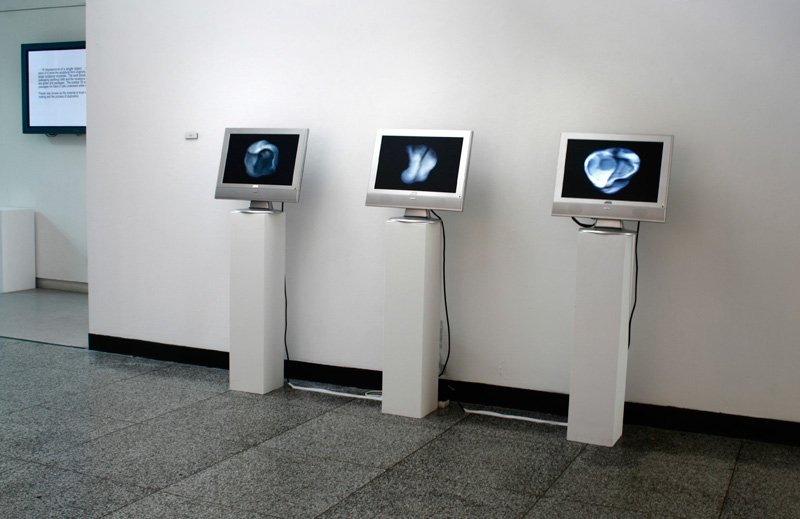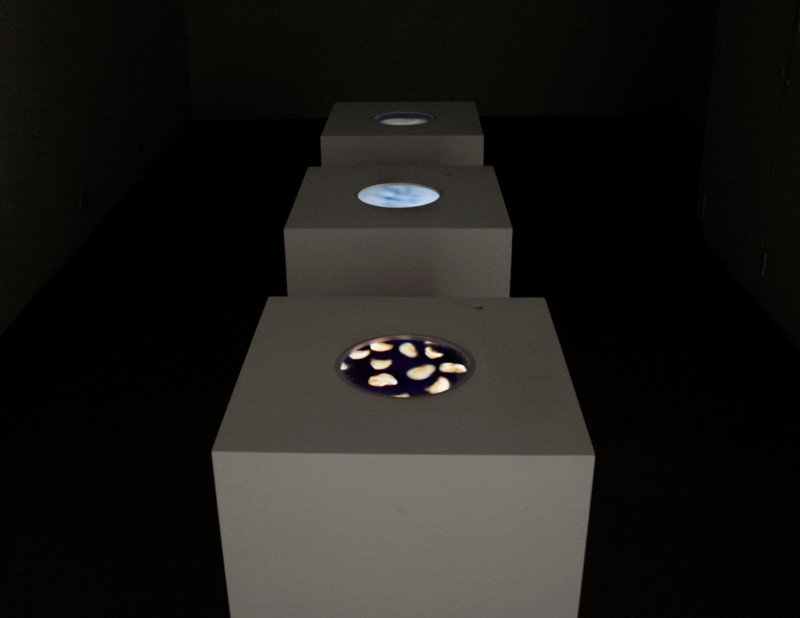The Absence of Alice #1
The first iteration of The Absence of Alice was exhibited at the QUT Visual Art Gallery in 2008, presenting a series of interrelated works inspired by Svenja Kratz’s initial experiences working with Saos-2 cells—a bone cancer cell line derived from an 11-year-old girl named Alice in 1973. Over six months, Kratz observed the cells’ responsiveness to environmental changes and their transformation through repeated passages. These observations led her to explore themes of transformation, absence, and the uncanny persistence of Alice’s cells as living fragments detached from their original donor.
The exhibition featured works such as 78 Impressions of a Single Object, consisting of 78 unique plaster casts of a bone-like form, symbolizing the repetitive processes of cell culture and transformation over time. Each cast was slightly altered by variations in the casting process, highlighting the idea of constant becoming and the impossibility of fully capturing or understanding a biological entity. Another notable piece included Fragments of a Body in the Process of Becoming Other, which further engaged with the notion of cells as entities in continual transformation, challenging the boundaries between life and death.
The video works In Process and Bone Breath added a dynamic perspective on cellular transformation and the unsettling autonomy of Alice’s cells. In Process captured the continuous changes in the Saos-2 cells, focusing on their uncanny independence as they evolved and proliferated beyond Alice's body. Bone Breath, meanwhile, incorporated breath as a metaphor for life and decay, linking the rhythmic, organic process of breathing to the persistence of Alice’s cells. Together, these videos emphasised the uncanny nature of cellular life separated from its origin, inviting viewers to reflect on the philosophical implications of life continuing beyond the organism or individual.
PROJECT PARTNERS: The Absence of Alice was developed in a creative partnership between The Institute of Health and Biomedical Innovation (IHBI) and The Creative Industries Faculty (CIF) at QUT, Brisbane (Aus). Completion of works would not be possible without the support from the Tissue Repair and Regeneration (TRR) Group and CIF technical staff. Special thanks to Dr Tony Parker and Jacqui McGovern from IHBI and visual arts technician Michael Riddle for training and assistance with artwork production. Many thanks are also extended to: Dr Dan Mafe, Dr Courtney Pedersen and Prof. Zee Upton.






